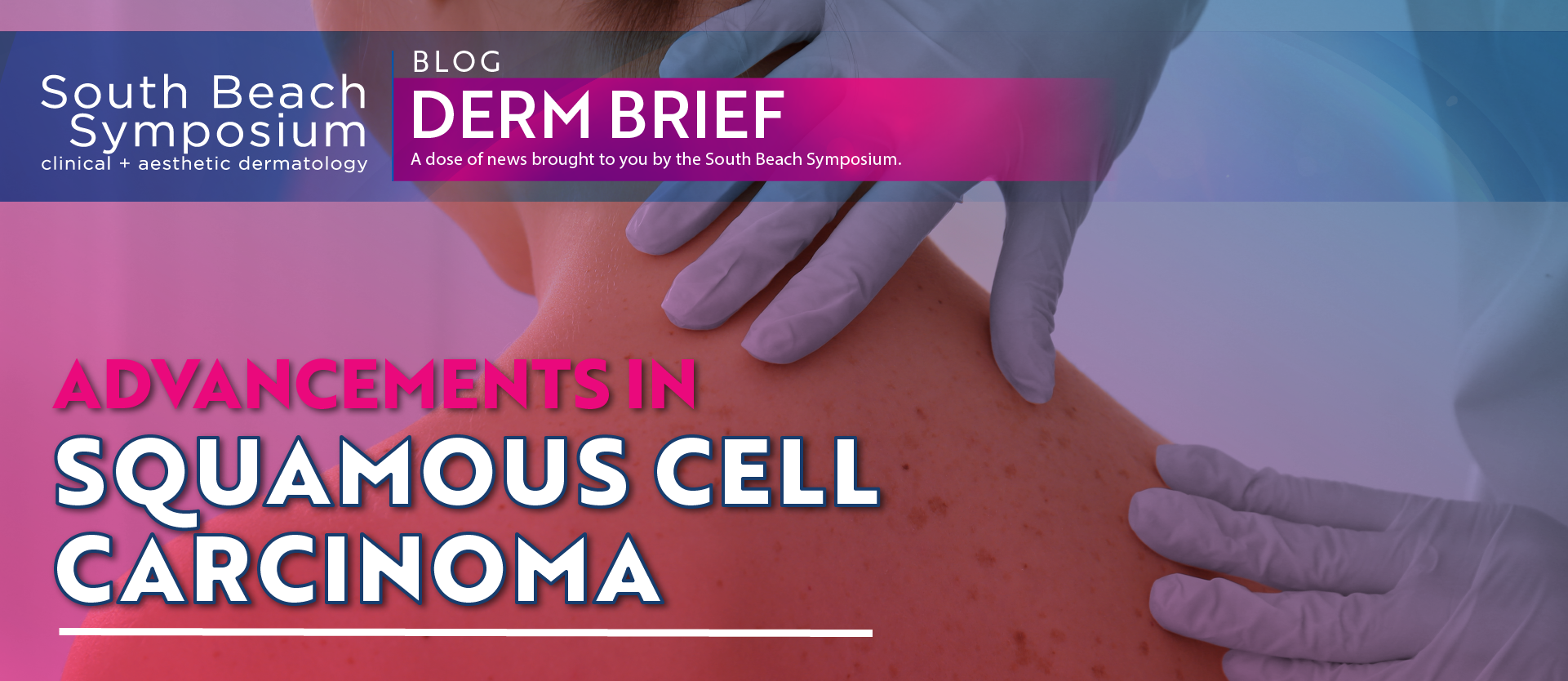Current estimates indicate that one in five Americans will develop skin cancer in their lifetime, and its prevalence is only growing with close to 10,000 new diagnosed cases per day. The second most common type of skin cancer, squamous cell carcinoma (SCC), contributes to 1 million new diagnosed cases each year; its incidence rate has grown over 200% in the past three decades alone. At a time of rising awareness and increased prevention education, improved disease treatment and management is necessary in order to combat this rapidly growing trend.
Recent advances in squamous cell carcinoma treatment are a result of heightened awareness of disease progression patterns and a greater understanding of field cancerization. Clinicians are becoming more sophisticated at risk-stratifying patients, offering more effective immunotherapies, and staging their SCC patients more frequently and appropriately. Improvements in staging and treatment procedures of SCC show much promise for enhanced patient care, allowing for more controlled and efficacious treatment plans.
Staging Patients with SCC
The development of optimal treatment and management programs in SCC patients relies heavily on the use of a staging system. Although tumor staging systems can be flawed, they are an integral part of assuring the best possible care. Both the Brigham and Women’s Hospital and American Joint Committee on Cancer (AJCC) systems are currently being used to stage patients; their ubiquitous implementation among physicians will help refine them and develop an accurate universal staging system for clinicians. Staging SCC patients allows for improved prevention strategies and prior planning of treatment timelines.
Understanding Disease Progression
Further advancements in SCC management stem from a more acute awareness of the evolution of the disease and field cancerization. With a better understanding of the progression from precancerous actinic keratosis (AK) to squamous cell carcinoma, clinicians are able to alter treatment methods and tailor them to more suitably approach patients with actinic damage – targeting the condition at its earliest stage. Recent clinical data implicates that actinic keratosis could be a marker in the disease process, signifying the need for close evaluation and monitoring of AK patients.
Prevention Methods for High-Risk Patients
With disease progression theories in mind, researchers have begun testing preventative strategies for individuals at high risk of developing skin cancer. Recent efforts in the development of oral medications for immunocompetent at-risk patients show promise. A phase 3 clinical trial using oral nicotinamide to reduce actinic keratosis and non-melanoma skin cancers found a 23% reduction in new non-melanoma skin cancer developments. Additionally, the number of patients with squamous or basal cell carcinomas decreased by 20%. Further research is needed to determine whether the study findings are accurate and reproducible. However, nicotinamide comes with relatively few side effects and could prove to be a worthwhile addition to the treatment of high-risk patients.
The latest advancements in squamous cell carcinoma treatments are promising for an increasingly burdened population. Novel ways of approaching patients, including condition staging, prophylactic treatment for high-risk individuals, and improved immunotherapies will allow for better disease management and greater progress in skin cancer therapy. The latest and upcoming clinical data will give clinicians a more sophisticated treatment strategy, improving both patient care and health outcomes.
















